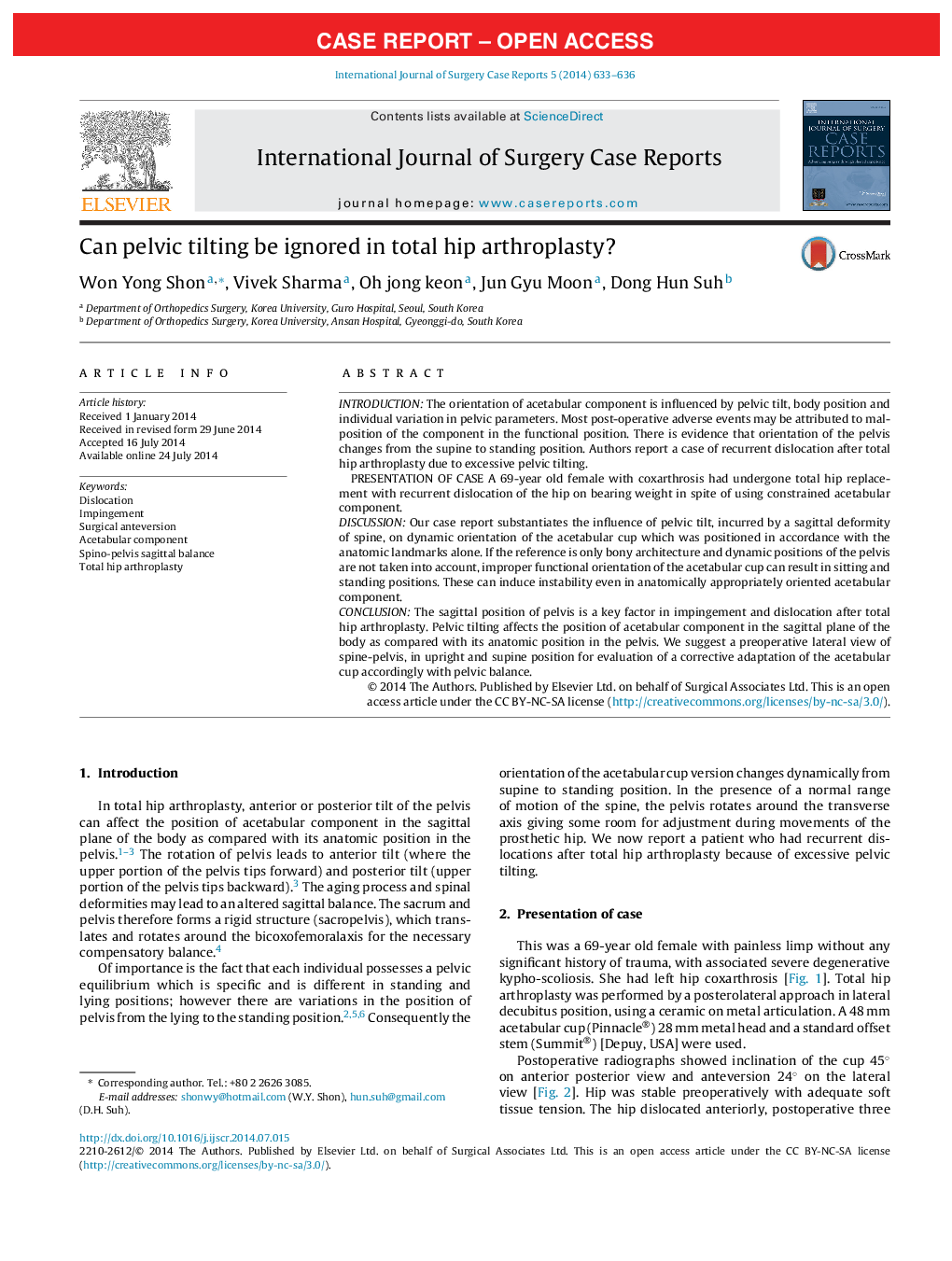| Article ID | Journal | Published Year | Pages | File Type |
|---|---|---|---|---|
| 4289525 | International Journal of Surgery Case Reports | 2014 | 4 Pages |
INTRODUCTIONThe orientation of acetabular component is influenced by pelvic tilt, body position and individual variation in pelvic parameters. Most post-operative adverse events may be attributed to malposition of the component in the functional position. There is evidence that orientation of the pelvis changes from the supine to standing position. Authors report a case of recurrent dislocation after total hip arthroplasty due to excessive pelvic tilting.PRESENTATION OF CASE A 69-year old female with coxarthrosis had undergone total hip replacement with recurrent dislocation of the hip on bearing weight in spite of using constrained acetabular component.DISCUSSIONOur case report substantiates the influence of pelvic tilt, incurred by a sagittal deformity of spine, on dynamic orientation of the acetabular cup which was positioned in accordance with the anatomic landmarks alone. If the reference is only bony architecture and dynamic positions of the pelvis are not taken into account, improper functional orientation of the acetabular cup can result in sitting and standing positions. These can induce instability even in anatomically appropriately oriented acetabular component.CONCLUSIONThe sagittal position of pelvis is a key factor in impingement and dislocation after total hip arthroplasty. Pelvic tilting affects the position of acetabular component in the sagittal plane of the body as compared with its anatomic position in the pelvis. We suggest a preoperative lateral view of spine-pelvis, in upright and supine position for evaluation of a corrective adaptation of the acetabular cup accordingly with pelvic balance.
